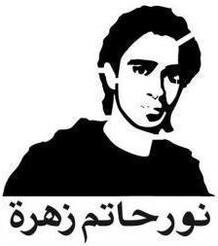| Graffiti Angel and writing, Pompeii, 2,000 years old. |
Graffiti has been with us for a long, long time. It is found everywhere humans gather. The laborers who built the pyramids carved and painted secret graffiti in places where they knew their overseers would never look. That was four thousand, five hundred years ago.
 | |||||
.
In Greece, as their economic world is crushed and the 1% bails out, allegorical and metaphorical graffiti is reportedly appearing everywhere [Link].
In Russia, there is the performance artists' group Voina, who among many other acts of political protest, painted a monumental outline of a penis on a drawbridge in Moscow.
Graffiti, even the decorative, conventionally beautiful design type, is anti-authoritarian. It defies the illusion of omnipotence of the ambient power structure. A lot of it is revolutionary, making it and those who paint it an Enemy of the state. Graffiti is a cornerstone of the "Broken Window" theory. Its practitioners are stereotyped as gang members.
Graffiti also defies the conventions of the art world in many ways, by escaping the approved art-spaces (the museum, gallery, sidewalk art show, etc) and treating the world as a canvas and exhibition space. Commercial concerns do this on a regular basis, and the power of taking it to the streets is not lost on these artists.
All this is not to pigeonhole the tradition in any way. It is alive, rapidly evolving and has more variants than one can imagine. There are pieces, large and small, in very hard to access places, where almost no one will see them. Viewers have to know where to look or be directed there, and often traverse initiatory hurdles for a moment of revelation. Some are in heavenly (high) places, others literally underground, or niches formed by inset doorways. This is direct, uncoated, uncurated, unschooled, untamed, hot and wet-wired high-risk art at its most primal.
The Morean Arts Center (MAC) is featuring graffiti artists (some active, some not) in its current show, "Leave a Message: Urban Art in Florida".
We've been waiting for a major venue to dare do this, as many have long ago in other cities, and now it's here.
[End Part I]
No comments:
Post a Comment